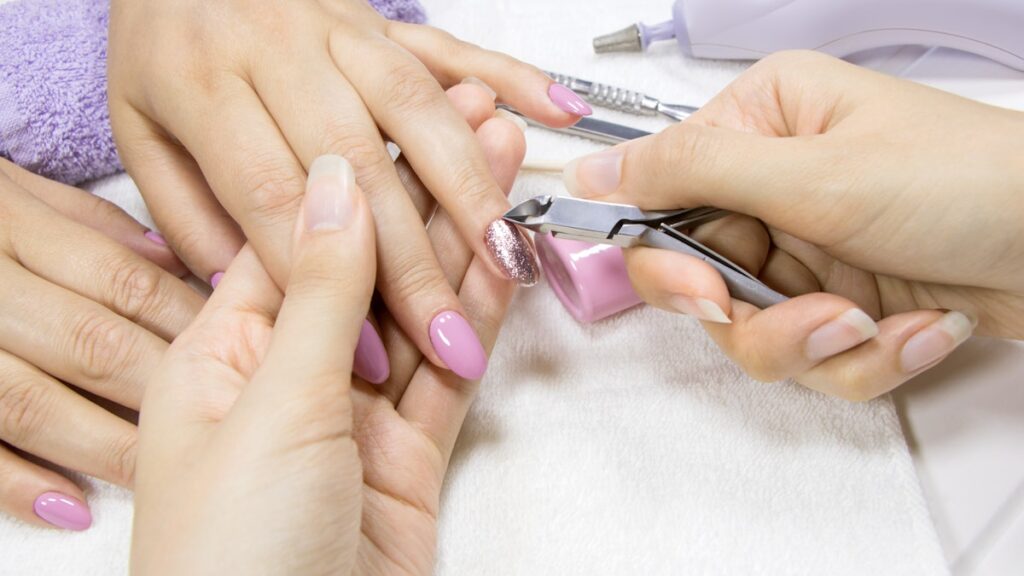Introduction
The cuticle is a critical aspect of nail care, yet it often becomes a topic of debate among beauty professionals. This is primarily due to misunderstandings about what constitutes living and non-living tissue. In this article, we will delve into safe cuticle removal practices to ensure the health and beauty of your nails and discuss the legal considerations in various states.
Understanding Cuticles
Cuticles serve several essential functions in nail health. They act as a barrier against bacteria and infection, helping to protect your nails and surrounding skin. However, misconceptions often lead to excessive or improper cuticle removal techniques that can cause damage.
Living vs. Non-Living Cuticle
A crucial part of safely managing cuticle care is understanding the differences between living and non-living cuticle tissue. The living cuticle is the tissue that is still connected to the nail bed, whereas the non-living cuticle is the dead skin that typically grows around the base of the nail. It’s vital to only remove the non-living cuticle to maintain nail health.
Safe Cuticle Removal Techniques
Ensuring the safe removal of cuticles involves a few key practices that nail technicians should adopt:
1. Use the Right Tools
Utilizing proper tools is fundamental in cuticle management. Employ a gentle cuticle pusher instead of metal implements that may harm the living tissue. Also, use sanitized clippers and nippers to avoid infections.
2. Soften the Cuticles
Before removal, it is advisable to soften the cuticles with warm water or a cuticle softener. This makes the process easier and minimizes the risk of damaging living tissue. Always ensure that the products used are suitable for all skin types and free from harmful chemicals.
3. Respect the Cuticle
One vital aspect of cuticle care is to respect the cuticle’s boundaries. Only remove the non-living cuticles and avoid cutting into the living skin, as this can lead to painful hangnails or infections.
Legal Considerations in Cuticle Removal
Interestingly, different states have varying regulations regarding the removal of cuticles. Some areas allow technicians to trim cuticles, while others have restrictions aimed at protecting clients from potential harm.
1. Know the Laws
Nail technicians should familiarize themselves with local regulations regarding cuticle removal. Understanding what is legally allowed will enhance your credibility and assist you in practicing safely.
2. Client Education
Educating clients about the importance of cuticle health is crucial. Discussing what the cuticle does, the risks involved with improper removal, and the techniques you employ promotes a safe and trustworthy environment. This transparency helps clients make informed decisions.
Benefits of Safe Cuticle Care
Adopting safe cuticle removal practices is not just beneficial but essential. Here are some advantages:
1. Healthier Nails
By avoiding harsh methods, you maintain the integrity of the cuticles and reduce the risk of infections that can arise from cutting living tissue.
2. Enhanced Appearance
Well-maintained cuticles lead to a polished and aesthetic nail appearance. Removing only the non-living cuticle makes the nail look cleaner and professionally done.
3. Client Retention
When salon clients feel safe and informed about the services being provided, they are more likely to return. Demonstrating knowledge of best practices establishes a good rapport and trust with clients.
Conclusion
Safe cuticle removal practices are critical for anyone in the beauty industry. Understanding the importance of the cuticle and employing proper techniques ensure healthy nail growth while keeping clients satisfied. Stay informed about regulations in your state and continually educate yourself to enhance your practice. With focus and care, you can provide the safest and most effective nail services possible, leading to lasting client relationships and a successful business.

